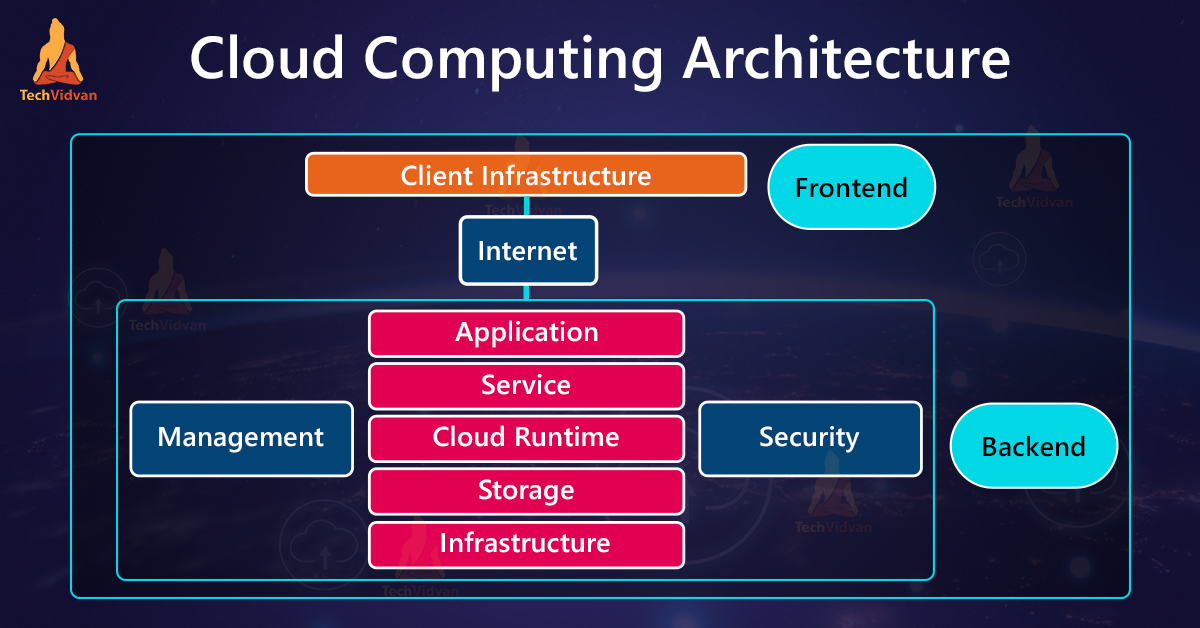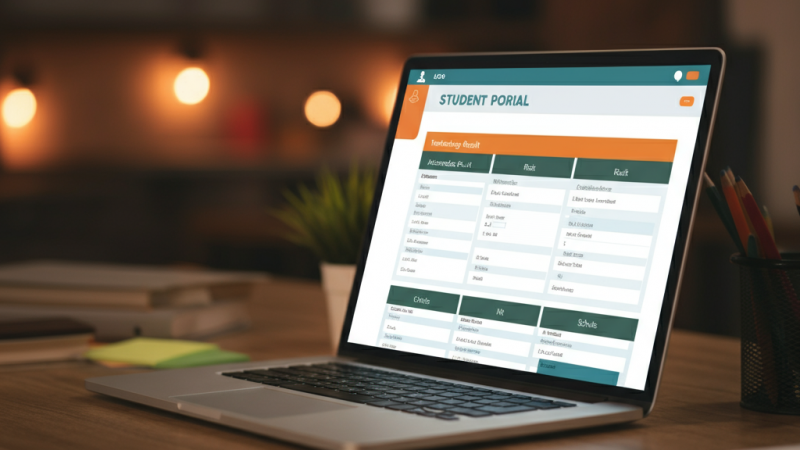cloud computing architecture

Cloud computing refers to the new and improved method of storing, computing, and manipulating data. Instead of the conventional techniques of data-centric architectures, cloud computing tends towards a more dynamic approach. Data is integrated into the cloud, which is a limited storage resource. The cloud is always an on-demand data storage resource, and cloud computing architectures use that data resource for computer systems, especially data storage and manipulations, without the direct involvement of the users.
Cloud computing uses servers that are laid over multiple locations and built into extensive facilities. The primary agenda of cloud computing is sharing resources between devices to achieve coherence and save operational costs.
Characteristics of Cloud Computing
Cloud computing comprises of the following characteristics:
- The agility of the overall system increases drastically. It also helps in improving the flexibility at the user level.
- Cloud computing helps in reducing costs. The cloud servers manage all the data present coherently and integrate it into the system. It not only helps reduce costs but the cost of time is also saved, which is of great value to enterprises nowadays.
- Maintenance of the data and servers is easier as the actual data is located outside of the primary resource. The cloud providers themselves do the usual maintenance.
- Productivity of the overall system increases as it allows multiple users to use and access the systems simultaneously.
- Security of the systems increases significantly as the data is monitored under a centralized source, making it easier to monitor.
Benefits of Cloud Computing Architecture
Following are some important benefits that cloud computing provides:
- Paramount security
- Increases flexibility of the network
- Reduces latency
- Enhances performance
- Easy to manage
Cloud Computing Architecture
Front-end
This part of the cloud computing architecture, as its name suggests, deals with all the aspects of the front-end mainframe of the system. The front-end can include interfaces, GUI, UI/UX, etc. This part is mostly used by the client-side and contains all the attributes required for interacting with the servers and the actual clouds. The functionality that is performed by this component deals with the user and their demands.
It can have the following attributes:
- Applications and interfaces required for using such cloud services
- It consists of client-side applications and interfaces such as web browsers like Google Chrome and Firefox
- Mobile devices
- Thin clients
- Fat clients
Back-end
The back-end is the component of the cloud architecture that deals with all the services which are provided to the user. This part monitors and manages the interfaces, functionalities, and attributes that the clients use. It is the ‘brain’ of cloud architecture and handles all the intricacies of this type of communication. The communication of the appliances with each other, which provide coherence, is all done here.
Back-end is developed with care and responsibility as it is one of the most important parts of the whole architecture. Following are the significant attributes of the back-end component:
- Data storage
- Security mechanism
- Virtual machines
- Servers
- Deploying methods
- Traffic controlling techniques
Components of The Cloud Computing Architecture
Storage
This part deals with all the data-related acts. It stores the data, manages it, manipulates it, and helps clients keep data such as files, videos, audios, etc. The capacity of storage depends on the capacity provided by the cloud service provider themselves.
Service
The service attribute of the cloud manages what kind of services are provided and how they can be provided for better efficiency of the system and to facilitate the client more.
Management
It is used to manage all the services and attributes of the cloud computing architecture, effortlessly.
Security
Security is a pre-defined component used in the back-end of the cloud system. It helps in better facilitating the system for securing the overall security threats.
Internet
One of the most underrated components of cloud computing architecture is the internet! It mainly allows the coherence between front-end and back-end and will enable them to interact and communicate with each other.
The Services Provided by The Cloud Computing Architecture
Software as a service (SaaS)
The SaaS service model helps the user remove them from all the hassle involving deploying. This makes the service providers install and maintain the servers on the cloud themselves and leaves the users out of this mess. They are also known as cloud application services. They basically run through the web and the browsers meaning there is no need to download them manually.
Platform as a service (PaaS)
This type of service model is quite similar to the SaaS service model, but the major difference is that rather than doing all the work for the user, it provides all the necessary tools and models required for the cloud software creation. It requires a thorough internet connection at all times.
Infrastructure as a service (IaaS)
It is also known as cloud infrastructure services. It is responsible for managing applications data, middleware, and runtime environments.
Cloud Computing in Networking
Cloud computing offers a great deal when it comes to networking. Following are some of the advantages of cloud architecture in networking:
- It provides low latency and high bandwidth to the networking systems
- Cloud computing provides paramount security to the networking systems
- The overall network performance and speed increases
Conclusion
Cloud computing and its applied branches are indeed one to prosper in the future and demand individuals to be able to produce on-demand results. Cloud and its branches are rapidly growing and making great progress in the networking domain. They are fast-growing, and the cloud computing architecture is also easily manageable.
This type of architecture mainly comprises two major essential parts, back-end and front-end, and all the functionality is divided into these two. This allows the IT teams to integrate their systems using clouds easily.
Athour bio:
Name: Atiq ur rehman
Atiq ur rehman is a technology web content creator and a cloud computing enthusiast working with a cloud computing solutions and services corporate, enteriscloud.com.






